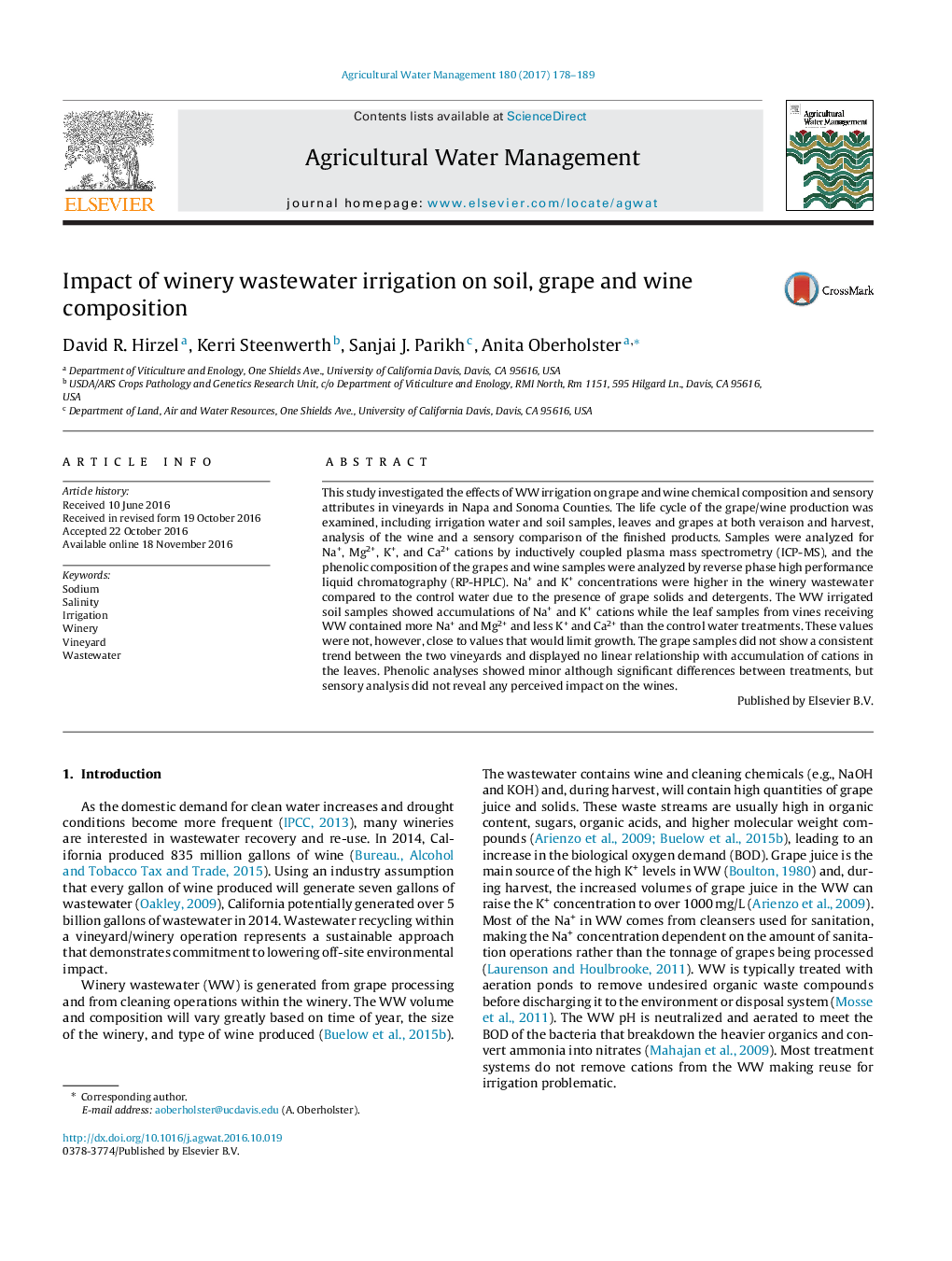| Article ID | Journal | Published Year | Pages | File Type |
|---|---|---|---|---|
| 5758458 | Agricultural Water Management | 2017 | 12 Pages |
Abstract
This study investigated the effects of WW irrigation on grape and wine chemical composition and sensory attributes in vineyards in Napa and Sonoma Counties. The life cycle of the grape/wine production was examined, including irrigation water and soil samples, leaves and grapes at both veraison and harvest, analysis of the wine and a sensory comparison of the finished products. Samples were analyzed for Na+, Mg2+, K+, and Ca2+ cations by inductively coupled plasma mass spectrometry (ICP-MS), and the phenolic composition of the grapes and wine samples were analyzed by reverse phase high performance liquid chromatography (RP-HPLC). Na+ and K+ concentrations were higher in the winery wastewater compared to the control water due to the presence of grape solids and detergents. The WW irrigated soil samples showed accumulations of Na+ and K+ cations while the leaf samples from vines receiving WW contained more Na+ and Mg2+ and less K+ and Ca2+ than the control water treatments. These values were not, however, close to values that would limit growth. The grape samples did not show a consistent trend between the two vineyards and displayed no linear relationship with accumulation of cations in the leaves. Phenolic analyses showed minor although significant differences between treatments, but sensory analysis did not reveal any perceived impact on the wines.
Related Topics
Life Sciences
Agricultural and Biological Sciences
Agronomy and Crop Science
Authors
David R. Hirzel, Kerri Steenwerth, Sanjai J. Parikh, Anita Oberholster,
